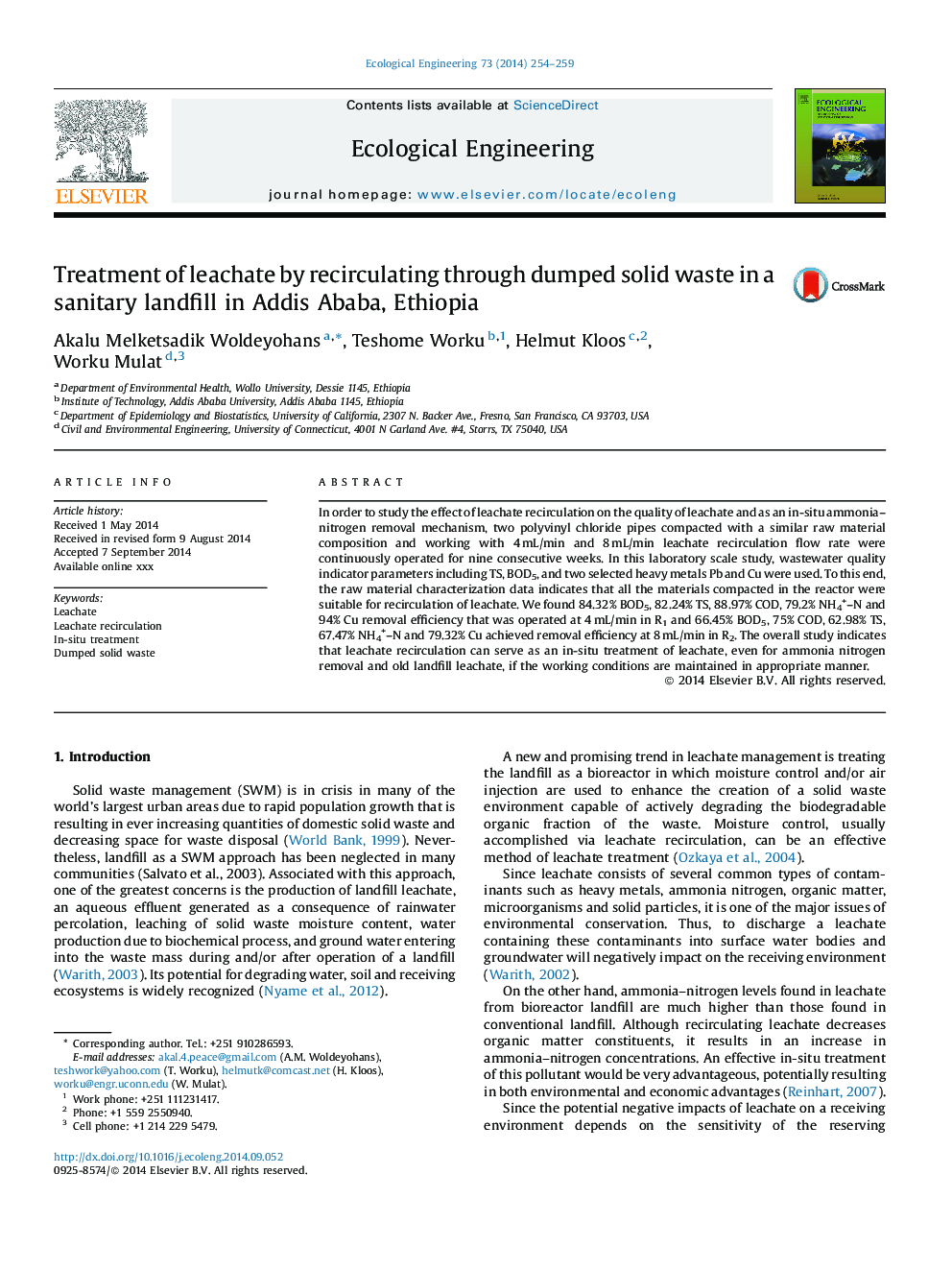| Article ID | Journal | Published Year | Pages | File Type |
|---|---|---|---|---|
| 6301908 | Ecological Engineering | 2014 | 6 Pages |
Abstract
In order to study the effect of leachate recirculation on the quality of leachate and as an in-situ ammonia-nitrogen removal mechanism, two polyvinyl chloride pipes compacted with a similar raw material composition and working with 4Â mL/min and 8Â mL/min leachate recirculation flow rate were continuously operated for nine consecutive weeks. In this laboratory scale study, wastewater quality indicator parameters including TS, BOD5, and two selected heavy metals Pb and Cu were used. To this end, the raw material characterization data indicates that all the materials compacted in the reactor were suitable for recirculation of leachate. We found 84.32% BOD5, 82.24% TS, 88.97% COD, 79.2% NH4+-N and 94% Cu removal efficiency that was operated at 4Â mL/min in R1 and 66.45% BOD5, 75% COD, 62.98% TS, 67.47% NH4+-N and 79.32% Cu achieved removal efficiency at 8Â mL/min in R2. The overall study indicates that leachate recirculation can serve as an in-situ treatment of leachate, even for ammonia nitrogen removal and old landfill leachate, if the working conditions are maintained in appropriate manner.
Related Topics
Life Sciences
Agricultural and Biological Sciences
Ecology, Evolution, Behavior and Systematics
Authors
Akalu Melketsadik Woldeyohans, Teshome Worku, Helmut Kloos, Worku Mulat,
